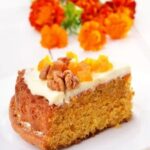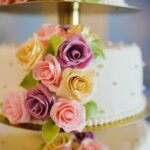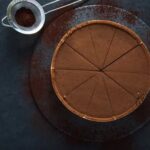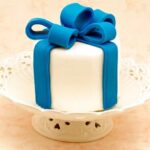Are you new to the world of cake decorating? Learning how to decorate a cake with icing for beginners can seem like a daunting task, but with the right guidance and knowledge, you can create beautiful designs that will impress your friends and family. In this article, we will explore the art of cake decorating with icing, providing you with essential tips and techniques to get you started on your journey to becoming a skilled decorator.
When it comes to cake decorating, icing is one of the most versatile and fundamental tools. Whether you want to create intricate designs or simple yet elegant decorations, mastering the art of working with different types of icing is crucial. Understanding how to manipulate its consistency and texture is key to achieving professional-looking results.
Before you start decorating your cakes with icing, it’s important to familiarize yourself with the various types of icing available and their ideal uses. Armed with this knowledge, along with essential tools and supplies for decorating, you’ll be well on your way to creating stunning edible masterpieces. So let’s dive in and explore the exciting world of cake decorating with icing.
Understanding Different Types of Icing and Their Consistencies
When it comes to cake decorating with icing, understanding the different types of icing and their consistencies is essential. There are several popular types of icing that are commonly used in cake decorating, each with its own unique qualities and uses.
Buttercream icing, for example, is a versatile option that can be used for piping decorations as well as spreading onto the cake’s surface. Royal icing, on the other hand, is known for its hard and smooth finish, making it ideal for intricate designs and decorations.
Another type of icing to consider is fondant, which is a pliable sugar paste that can be rolled out and draped over a cake for a flawless finish. It is also frequently used for creating three-dimensional decorations such as flowers and figurines. Ganache, made from chocolate and cream, offers a rich and glossy option for cake decorating with a decadent flavor.
Different types of icing also have varying consistencies that can affect their application and appearance. Understanding these consistencies is crucial for achieving desired results when decorating cakes. For example, buttercream can range from stiff to soft consistency depending on the amount of liquid added. Royal icing should be thin enough to flow smoothly from a piping bag but not so runny that it loses its shape.
To summarize, being knowledgeable about the different types of icing and their consistencies will provide a foundation for successful cake decorating with icing. Whether you’re a beginner or an experienced baker, having this understanding will allow you to choose the right type of icing for your desired design as well as manipulate its consistency for optimal results.
| Type of Icing | Consistency |
|---|---|
| Buttercream | Can range from stiff to soft depending on liquid added |
| Royal Icing | Should be thin enough to flow smoothly but not too runny |
| Fondant | Pliable sugar paste that can be rolled out |
| Ganache | Rich and glossy consistency made from chocolate and cream |
Essential Tools and Supplies Needed for Decorating With Icing
When it comes to decorating a cake with icing, having the right tools and supplies is essential for creating beautiful designs. Whether you’re a beginner or have some experience in cake decorating, here are some essential items you’ll need to get started:
- Piping Bags: These are used for applying the icing onto the cake and come in various sizes for different decorating techniques.
- Piping Tips: There are different types of piping tips that can create various shapes and textures, such as round tips for borders and writing, star tips for swirls, and petal tips for making roses.
- Offset Spatula: This tool is perfect for spreading icing onto the cake smoothly and evenly. It’s also great for creating textured designs on the surface of the icing.
- Bench Scraper: A bench scraper is useful for achieving sharp edges on your cake and smoothing out the sides of the icing.
- Turntable: Decorating a cake is much easier when it’s placed on a turntable, allowing you to rotate the cake while you decorate for even application of icing.
In addition to these basic tools, there are also some specific supplies needed depending on the type of icing being used. For example, if you’re working with royal icing, you may need parchment paper and small squeeze bottles for flooding designs. If using fondant, a rolling pin, fondant smoother, and cornstarch will be necessary.
Investing in quality tools and supplies will not only make your cake decorating experience more enjoyable but will also ensure professional-looking results. With these essentials in hand, you can begin your journey into the world of cake decorating with confidence.
Preparing the Cake for Decorating
Before you begin decorating your cake with icing, it is essential to make sure that the cake itself is properly prepared. This includes allowing the cake to cool completely before applying any icing. Warm cake can cause the icing to melt or become runny, resulting in a less than perfect finished product. Additionally, it is important to level the top of your cake to ensure an even surface for decorating.
For those new to cake decorating, it’s advisable to apply a crumb coat of icing before adding the final layer of icing. A crumb coat is a thin layer of icing that seals in any loose crumbs on the cake, preventing them from showing through in the final decoration. This step not only helps achieve a smoother finish but also provides a clean canvas for your creative designs.
Another important aspect of preparing a cake for decorating is choosing the right type of icing for your design. Different types of icing have varying consistencies and textures, which can affect how they are applied and how well they hold their shape on the cake. For example, buttercream frosting works well for creating smooth surfaces and intricate details, while cream cheese icing is softer and better suited for rustic designs.
| Cake Preparation Tips | Details |
|---|---|
| Allowing Cake to Cool | Make sure the cake has cooled completely before decorating. |
| Leveling the Cake | Ensure an even surface by leveling the top of the cake. |
| Applying Crumb Coat | Seal in crumbs with a thin layer of icing before adding final decorations. |
| Choosing Icing Type | Select an icing type that suits your design and application method. |
Basic Icing Techniques for Beginners
Swirls
One of the most basic and popular icing techniques for cake decorating is creating swirls. This is achieved by using a piping bag fitted with a large round tip.
To create swirls, start at the outer edge of the cake and work your way towards the center in a circular motion, slightly overlapping each layer to create a beautiful and elegant design. Practice on a flat surface first to get a feel for the pressure needed when squeezing the piping bag.
Roses
Creating buttercream roses can seem daunting at first, but with practice, it can become one of your signature cake decorations. Using a piping bag fitted with a petal tip, start in the center and pipe small ‘C’ shaped motions around it to form petals, layering them on top of each other until you achieve the desired fullness. With steady hands and patience, you’ll soon be able to create beautiful, lifelike roses that will impress anyone who sees them.
Borders
Adding borders to your cakes can instantly elevate their look and give them a polished finish. There are various border techniques you can use, such as shell borders, rope borders, or even simple dots. Experiment with different piping tips and find which border style suits your cake design best. Pipe along the edge of your cake using consistent pressure for an even and professional-looking result. Borders are also great for covering any imperfections on the edge of your cake.
Mastering these basic icing techniques will give you the confidence to start decorating cakes like a pro. Remember that practice makes perfect, so don’t be discouraged if your first few attempts don’t turn out exactly as you envisioned. With time and dedication, you’ll soon be creating stunning icing designs that will impress everyone who sees-and tastes-your delicious creations.
Tips and Tricks for Achieving a Smooth and Professional Finish
Decorating a cake with icing can seem intimidating for beginners, but with the right tips and tricks, you can achieve a smooth and professional finish. Here are some helpful techniques to make your cake look polished and impressive:
- Use a crumb coat: Before applying the final layer of icing, spread a thin layer of icing over the entire cake to seal in any crumbs. This will prevent crumbs from showing through the final layer of icing.
- Invest in an offset spatula: An offset spatula is a must-have tool for achieving a smooth finish. Its angled blade allows for easy spreading and smoothing of icing on the top and sides of the cake.
- Vary your pressure: When spreading icing onto the cake, vary your pressure to create an even layer. Applying consistent pressure will help avoid uneven or lumpy surfaces.
In addition to these techniques, there are also some tricks that can help you achieve a professional-looking finish on your cake:
- Chill the cake: After applying the crumb coat and before adding the final layer of icing, place the cake in the refrigerator for about 15-20 minutes. This will firm up the crumb coat and make it easier to apply the final layer of icing smoothly.
- Smooth with parchment paper: For extra smoothness, use a piece of parchment paper to gently press and smooth out any imperfections in the icing once it’s been applied to the cake.
- Clean up edges: Use a clean, sharp knife or spatula to clean up any excess icing that may have dripped down the sides of the cake. This will give your cake a clean and polished look.
By incorporating these tips and tricks into your cake decorating process, you can achieve a smooth and professional finish that will impress your friends and family. Don’t be afraid to practice and experiment with different techniques until you find what works best for you. With time and patience, you’ll become more confident in your ability to decorate cakes with icing like a pro.
Adding Color and Texture to Your Icing Designs
Choosing the Right Colors
When it comes to adding color to your icing, it’s important to choose the right shades that complement your overall design. Consider the theme of the occasion or event for which the cake is being made, as well as any specific color preferences of the recipient. Gel food coloring is often recommended for achieving vibrant and consistent colors in your icing.
Creating Textured Effects
Texture can add depth and visual interest to your icing designs. Consider using different techniques such as ruffles, waves, or even edible glitter to create texture on your cake. You can achieve these effects using various tools such as piping tips, spatulas, or combs designed specifically for creating texture in icing.
Using Multiple Colors
For a truly eye-catching design, consider using multiple colors in your icing. You can create ombre effects by blending different shades together, or use contrasting colors to create bold and striking designs. Experiment with different combinations to see what works best for your specific cake decorating project.
By incorporating these tips into your cake decorating with icing, you can enhance the visual appeal of your creations and take them to the next level. Remember that practice makes perfect, so don’t be afraid to experiment with different colors and textures until you find the perfect combination for your masterpiece.
Troubleshooting Common Issues and Mistakes in Cake Decorating With Icing
Decorating a cake with icing can be a fun and rewarding experience, but it’s not without its challenges. As a beginner, it’s important to be aware of common issues and mistakes that can arise during the decorating process. By understanding these potential pitfalls, you can be better prepared to troubleshoot and overcome them.
One common issue that beginners may encounter when decorating with icing is air bubbles in the icing. These air bubbles can create an uneven or bumpy surface on the cake, detracting from the overall appearance of your design. To prevent this problem, be sure to mix your icing thoroughly and avoid over-mixing, which can introduce excess air into the mixture. Additionally, gently tapping the cake after applying the icing can help release any trapped air bubbles.
Another common mistake in cake decorating with icing is using the wrong consistency of icing for a particular technique. Different techniques require different consistencies of icing – for example, a stiff consistency is typically used for creating intricate designs and decorations, while a thin consistency is better suited for covering large areas smoothly.
If you find that your icing is too thick or too thin for the desired technique, you can adjust the consistency by adding small amounts of water or powdered sugar until you achieve the right texture.
Additionally, color bleeding can occur when working with multiple colors of icing on a cake. This happens when one color begins to bleed into another, resulting in a muddy or messy appearance.
To prevent this issue, allow each color of icing to fully dry before adding additional colors or using a barrier such as a dam made of thicker icing to separate different sections of color. Being aware of these common issues and mistakes will help you navigate potential challenges as you gain experience in cake decorating with icing.
Adding color and texture to your cakes through intricate piping techniques has become increasingly popular these days due to social media platforms where everyone seeks something unique with their special occasions and celebrations.
With just enough practice and patience at hand regarding incident occurrences in rosette patterns not appearing beautiful enough due to shaky hands will only make you get better at doing this sooner or later.
Doing your best at remembering little tips despite commonplace matters affecting outcomes shall push limitations away from mastering those amazing designs on cake surfaces wherever you are seen kindly showing off those gorgeous cakes anytime soon.
Creative Ideas and Inspiration for Decorating With Icing
Are you looking for creative ideas and inspiration for decorating your cake with icing? Look no further. Once you have mastered the basic icing techniques, the possibilities for decoration are endless. One creative idea is to use different types of tips and piping bags to create intricate designs such as flowers, leaves, and intricate patterns. You can also experiment with adding texture to your icing by using a variety of tools such as combs, spatulas, or even stencils.
Another source of inspiration for decorating with icing is looking at other forms of art such as textiles, ceramics, or even nature itself. Use these sources as inspiration for creating unique and beautiful designs on your cake. Additionally, consider incorporating different colors into your icing designs to make them pop. You can achieve this by using gel food coloring or even natural food dyes such as beet juice or turmeric.
Lastly, don’t be afraid to think outside the box when it comes to decorating with icing. Consider incorporating non-traditional elements such as edible glitter, metallic paints, or even edible flowers to truly elevate your cake decorating skills. By exploring different ideas and finding inspiration from various sources, you can take your cake decorating to the next level and create stunning masterpieces that will leave everyone impressed.
Conclusion
In conclusion, decorating a cake with icing can be a fun and rewarding experience, especially for beginners. With the right tools, understanding of different icing consistencies, and basic techniques such as swirls, roses, and borders, anyone can create a beautiful and professional-looking cake. It’s important to remember that practice makes perfect, so don’t be discouraged if your first few attempts aren’t flawless.
As you continue to hone your skills in cake decorating with icing, don’t forget to celebrate your successes along the way. Whether it’s achieving a smooth finish or mastering a new technique, take pride in your accomplishments. Additionally, sharing your masterpiece with friends and family can bring joy to both yourself and those around you. There’s nothing quite like seeing the smiles on their faces when they see the beautiful cake you’ve created.
Finally, don’t be afraid to let your creativity shine through when decorating with icing. Experiment with adding color and texture to your designs, and don’t hesitate to seek inspiration from various sources such as nature or art. The more you explore and try new things, the more unique and impressive your cake creations will become. So embrace the journey of cake decorating with icing – it’s an artform that brings people together and brings delight to any occasion.
Frequently Asked Questions
How Do You Make a Plain Cake Look Fancy?
There are several ways to make a plain cake look fancy. One option is to use different piping techniques with frosting to create intricate designs or patterns on the cake.
Adding edible flowers, fresh fruit, or colorful sprinkles can also elevate the appearance of a simple cake. Another idea is to use edible glitter or luster dust to add shimmer and shine to the cake’s surface, making it look more festive and elegant.
Can I Teach Myself to Decorate Cakes?
Yes, it is absolutely possible to teach yourself how to decorate cakes. With the wealth of tutorials, online courses, and instructional videos available, aspiring cake decorators can learn various techniques at their own pace.
Starting with basic skills like icing a smooth layer or creating simple piping designs can lead to more advanced decorating methods over time. Practice, patience, and a willingness to learn from mistakes are key when teaching yourself how to decorate cakes.
What Does a Beginner Need for Cake Decorating?
For beginners in cake decorating, there are several essential tools and supplies that are needed to get started. These include a set of quality piping tips and pastry bags for creating different icing designs, an offset spatula for smoothing icing and applying decorations, food coloring gel for tinting frosting, and a turntable for easily rotating the cake while decorating.
Additionally, having a good quality cake stand or cardboard rounds is important for displaying finished cakes. As your skills progress, you may find it beneficial to invest in additional tools such as fondant smoothers or flower cutters.

Welcome to my blog about home and family. This blog is a place where I will share my thoughts, ideas, and experiences related to these important topics. I am a stay-at-home mom with two young children. I hope you enjoy reading it! and may find some helpful tips and ideas that will make your home and family life even better!





